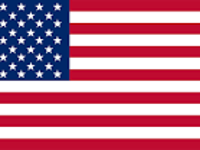The Ultimate Guide to Surface Finishes for CNC Machined Parts
The Power of Surface Finishes
A CNC machined component is the first step – its surface finish defines how it interacts with the world. From sleek automotive trim that catches the eye to aerospace components that defy corrosive environments, the right finish transforms a raw part into a high-performance product. With a wide range of options, making the right selection is crucial.
Surface Roughness: Understanding the Numbers
Surface roughness is a quantitative measure of a part's texture. Ra (roughness average) is the most common metric, expressed in micrometers (μm) or microinches (μin). Here's a general guideline to help you interpret these values:
- As-Machined (3.2 μm - 1.6 μm / 125 μin - 63 μin): The baseline finish with visible tool marks.
- Smooth Finishes ( 0.8 μm - 0.4 μm / 32 μin - 16 μin): Surfaces that feel smooth to the touch, ideal for sliding components and enhanced aesthetics.
- Ultra-Smooth Finishes (0.2μm - 0.1 μm / 8 μin - 4 μin): Polished or mirror-like finishes often required for critical sealing surfaces, medical parts, or purely luxurious aesthetics.
Get a Quote
Decoding Your Finishing Options
Let's explore the range of finishing processes that can transform your CNC machined parts:
1) Abrasive Techniques:
- Bead Blasting: Versatile and adaptable, with different media options to achieve satin, matte, or pre-coating preparation finishes.
- Sanding & Polishing: Progressive use of finer abrasives for smoothness, or targeted polishing of specific features.
- Vibratory/Mass Finishing: Ideal for bulk parts, offering edge deburring, smoothing, and some polishing, depending on media and cycle time.
2) Coatings:
- Anodizing (Aluminum): Type II for color and moderate protection, Type III ("hardcoat") for superior wear and corrosion resistance.
- Powder Coating: Durable and customizable, with a vast range of colors, textures, and functionality.
- Painting: Offers flexibility in color, sheen, and patterns. Wet spray painting achieves high-quality aesthetic finishes.
3) Chemical Treatments:
- Electropolishing: Smooths metal surfaces, improving cleanliness and corrosion resistance, especially for critical applications.
- Passivation: Enhances stainless steel's built-in corrosion protection by optimizing the passive surface layer.
- Black Oxide: Provides a sleek black finish on ferrous metals while offering mild corrosion resistance.
- Plating: Deposits a thin layer of different metals (chrome, zinc, etc.) for appearance, wear resistance, or conductivity.
Choosing Wisely: Key Considerations
- Function: Will the part endure friction, chemicals, or weather? Is visual appeal paramount?
- Material: Some finishes are material-specific (e.g., plating options may vary based on the substrate metal).
- Budget: More complex finishes often incur higher costs. Balance your ideal result with what's financially feasible.
- Batch Size: Some finishes lend themselves better to small batches, others excel with large quantities.
Get a Quote
The Norck Advantage: Beyond Basic Finishing
Norck understands that exceptional products demand exceptional finishes. Here's why we're your ideal partner:
- Design for Finishing: Norck's engineers proactively suggest design tweaks to optimize surface finish success and cost-efficiency.
- In-House Expertise: A wide range of finishing capabilities within the Norck network simplifies your process and ensures consistent quality.
- Materials Matter: Norck's global material access and finishing knowledge help you navigate even the most unique material-finish combos.
- Precision Metrology: Advanced equipment verifies that your finished parts meet exact roughness (Ra) or aesthetic specifications.
Experience the Norck Difference
Ready to make speed your competitive advantage? Contact Norck today! Discover how our fast 3D printing services, combined with our broader manufacturing expertise, can propel your business forward.


 English
English